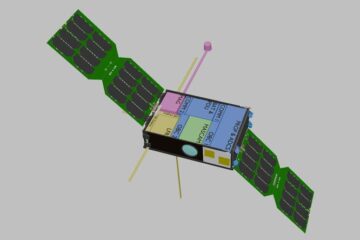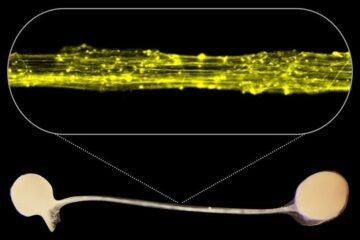Clue to prion formation found, offers step toward treating puzzling diseases

Prions—their existence is intriguing and their links to disease are unsettling. These unconventional infectious agents are involved in mad cow disease and other fatal brain illnesses in humans and animals, rattling prior assumptions about the spread of infections.
Dartmouth Medical School biochemists studying the mysteries of these prion particles have discovered a novel step in their formation. Their results, reported in a recent issue of Biochemistry could help provide a new approach for therapy against prion diseases. The team, headed by Dr. Surachai Supattapone, assistant professor of biochemistry and of medicine, includes Ralf Lucassen and Koren Nishina.
The cause of certain neurodegenerative diseases has long stymied scientists. The variant Creutzfeldt-Jakob disease in humans — which is linked to bovine spongiform encephalopathy or mad cow disease — as well as scrapie in sheep and chronic wasting disease in deer and elk are transmissible.
Yet the infectious agent is not a parasite, fungus, bacterium or virus. Instead, it seems to be a prion, which is a protein, but an abnormally shaped one. A normal brain protein called PrPC misfolds into the prion protein called PrPSc. Until prions were discovered, proteins were not considered agents of infection.
Still unknown is how PrPC turns into PrPSc, which is characterized biochemically by being resistant to enyzme digestion. The researchers created a system to study the conversion into PrPSc in a test tube.
“We found that we could inhibit this conversion with compounds that block free sulfhydryl groups,” said Supattapone. “This is the first discovery that formation of PrPSc requires a reactive chemical group. It is a clue that there may be a cofactor containing the free sulfhydryl group, such as an enzyme that helps to catalyze the process of forming PrPSc from PrPC. Moreover, it may be a first step of a logical approach to find a therapeutic strategy against prion disease based on specifically inhibiting a catalytic cofactor.”
Media Contact
More Information:
http://www.dartmouth.edu/All latest news from the category: Life Sciences and Chemistry
Articles and reports from the Life Sciences and chemistry area deal with applied and basic research into modern biology, chemistry and human medicine.
Valuable information can be found on a range of life sciences fields including bacteriology, biochemistry, bionics, bioinformatics, biophysics, biotechnology, genetics, geobotany, human biology, marine biology, microbiology, molecular biology, cellular biology, zoology, bioinorganic chemistry, microchemistry and environmental chemistry.
Newest articles

Caution, hot surface!
An international research team from the University of Jena and the Helmholtz Institute Jena are demystifying the mechanisms by which high-intensity laser pulses produce plasma on the surface of solids….

Exploring the Asteroid Apophis With Small Satellites
In five years’ time, a large asteroid will fly very close to Earth – a unique opportunity to study it. Concepts for a national German small satellite mission are being…

First model of the brain’s information highways developed
Our human brain is not only bigger and contains more neurons than the brains of other species, but it is also connected in a special pattern: Thick bundles of neurons…





















